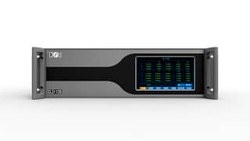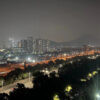Shifting from traditional electricity distribution systems to smart grids requires a comprehensive approach that involves the integration of advanced technologies, new regulatory frameworks, and public engagement. This article highlights some of the key steps that can be taken to facilitate this transition.
What is a Smart Grid?
A smart grid is an advanced electrical power transmission and distribution system that uses digital technologies to manage power delivery more efficiently and reliably. It is designed to accommodate new technologies such as renewable energy sources, electric vehicles, and energy storage systems. The smart grid allows two-way communication between the power company and consumers, enabling real-time monitoring and control of the distribution system.
One of the key advantages of a smart grid is the ability to balance supply and demand by automatically adjusting electricity generation and usage. This can reduce the number of power outages and improve the overall stability of the grid. The smart grid also has the potential to integrate renewable energy sources, such as solar and wind, and manage these intermittent energy sources more effectively.
In addition to improving reliability and reducing costs, the smart grid can also enable new energy management services for consumers. For example, smart meters can provide consumers with real-time information about their energy usage, allowing them to better manage their energy consumption and reduce their electricity bills.

Investments in infrastructure
Upgrading the existing transmission and distribution infrastructure with advanced sensors, communication systems, and control technologies is a crucial step in shifting to smart grids. Building new smart substations, upgrading existing power lines, and installing smart meters are some of the areas where investments are necessary.
The required capital should not be underestimated. The Dutch transmission system operator TenneT will increase its annual investment in grid infrastructure to at least €6bn by year 2025 for expansion and maintenance to address its energy transition challenges with focus on the 'smart'use of its grids.
Supportive Policies and Regulations
Governments and regulators can play a vital role in incentivizing the adoption of smart grid technologies by developing supportive policies, regulations, and funding mechanisms. This includes setting up standards for interoperability of different technologies, providing suitable incentives for utilities to invest in new infrastructure; and creating opportunities for new players such as prosumers and energy service providers to participate in the market. In many countries, the majority of electricity providers is privatized. This lead to a focus on profit over public service, resulting in higher costs for consumers or lower quality services. My concerns are also about the risk of monopoly power and lack of regulation in a privatized industry, which can lead to price gouging and other anticompetitive behaviour. Only regulatory bodies can overcome this to a certain extent.
Encourage consumer engagement
Consumers can play a significant role in the shift to smart grids by investing in energy-efficient technologies, generating their own energy through solar panels or other renewable sources, and actively participating in demand response programs.
Raising public awareness about the benefits of smart grids can help to increase acceptance and adoption. This can be done by providing information about the impact of energy consumption on the environment and the importance of energy efficiency. Utilities can also offer incentives to consumers to switch to more efficient appliances and participate in demand-side management programs.
Collaboration and Partnerships
Collaboration between utilities, government agencies, technology providers, and other stakeholders is crucial to realizing the full potential of smart grids. Joint efforts can be made to develop effective solutions, identify opportunities for innovation, and share best practices.
Prioritize Cybersecurity
Ensuring the security and reliability of smart grid systems is critical to their success. Governments, utilities, and technology providers must prioritize cybersecurity to prevent attacks and protect the grid from potential damage. The security should always be monitored and periodically audited by 3rd party specialists.
How long does it take to transit to a Smart Grid?
The timeframe for transitioning to a smart grid can vary depending on the specific goals and strategies of the utility company and government agencies involved. Generally, the complete transition to a smart grid can take several years.
The initial planning stage can take months or even years, during which the utility company evaluates its current infrastructure, defines its goals and priorities, and develops its roadmap for implementing a smart grid. The deployment of smart grid technologies, such as advanced metering infrastructure (AMI), distribution automation, and grid management systems, can take several years or more depending on the extent of the deployment.
One of the challenges of transitioning to a smart grid is the need for widespread infrastructure upgrades, which can be expensive and time-consuming. However, the benefits of a smart grid, such as increased efficiency, improved reliability, and greater sustainability, make the investment worthwhile.
Takeaway
The transition from traditional electricity distribution systems to smart grids is a complex process that requires a multi-stakeholder approach. It requires a significant investment of capital, time, resources, and effort from all parties involved.
We in CLOU can contribute with various solutions to make the transition smooth. Please contact us for specific projects or questions.
Editor's note: This article was originally published in April 2023 and has been updated for comprehensiveness.




